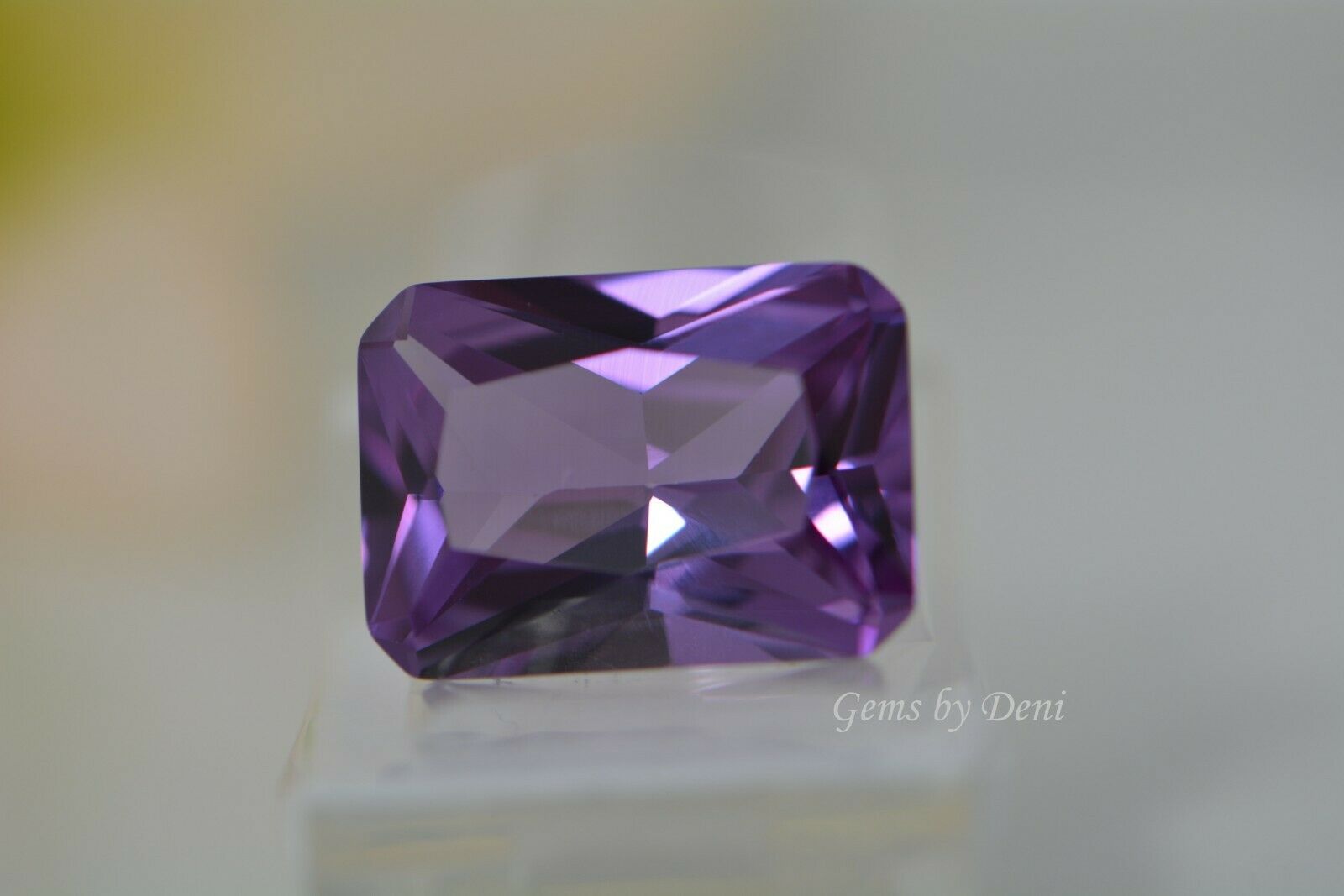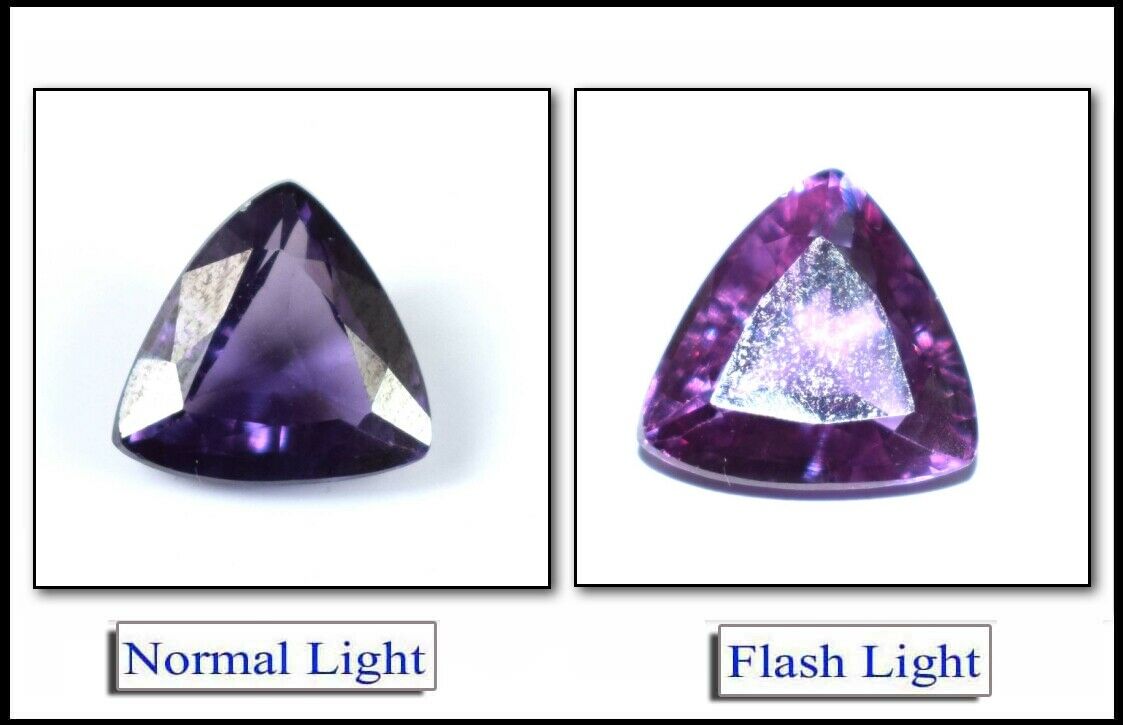-40%
0.50 ct Natural Oval-cab Green-->Orange VVS Alexandrite Cats Eye (Sri Lanka)
$ 52.8
- Description
- Size Guide
Description
0.50 ct Natural Oval-cab Green-->Orange VVS Alexandrite Cats Eye (Sri Lanka)New without Tags. This gem has never been used/placed/set in a setting.
It is utterly undamaged, unmarred and in perfect condition as expected of NWOTags.
I have included two Alexandrite Cats Eye-related articles below for your appreciation and enjoyment.
Summaries from below:
"
Alexandrite is a variety of chysolberyl
,
with an excellent hardness of 8.5 on the Mohs scale
."
...
"Alexandrite is very rare because of its chemical composition." ... "
Alexandrite exhibiting chatoyancy or the cat's eye effect is known, but very rare." ...
"Through spectroscopic analysis, cat's eye chrysoberyl can be easily identified from similar materials. Rare chrysoberyl specimens that exhibit color change and chatoyancy ability are traded and identified as 'cat's eye alexandrite'."
... "Chrysoberyl cat's eye is not typically treated or enhanced in any way."
Type: Natural Alexandrite Cats Eye
(personally confirmed as Genuine Cats Eye Alexandrite by dichroscope, polariscope, spectroscope, UV short&long-wave light, measured Specific Gravity=3.70) -- captej2012
Shape: Oval Cabochon-cut
Weight: 0.50 ct
Dimensions: 4.63mm x 3.72mm x 2.88mm
Color: Green to Orange 100%color-changing
Hardness: 8.5 rating on the Mohs Scale
Luster: Very Good
Clarity: VVS
Hardness: 8.5 rating on the Mohs Scale
Treatment: Not Heated, Not Treated, Not Enhanced
Origin: Sri Lanka
In 2002, we found this
Color-changing Cats Eye Alexandrite
at the Jewelry Mart,
And brought her home as Sister to Other Daughters.
In our care for all these years,
We celebrated her as
Dancing Darling
.
She still
dances-Green
and
flashes-Orange
to my quavering voice;
But this day, she dreams of more romantic and royal admirers.
We will miss her and envy who loves her away.
Sing sweetly and she will
dance-Green
and
flash-Orange
for you too.
We are an eBay eStore enterprise focused on selling mostly Loose Natural Gemstones. Stay here, look around and learn. Via eBay Messaging, ask us questions, make an offer, and otherwise discuss your wishes, concerns and hopes. We pride ourselves as good-spirited folks having fun and doing our best to share the joy of Nature's most beautiful and enduring literal treasure -- Natural Gemstones. Expect to find us cheerful and trustworthy, and we will expect the same of you. For us, Negative FeedBack as a means of coercion is never needed and only degrades everyone's enjoyment in what should otherwise be a fun shopping experience. And finally, please enjoy my work as eBay's First (unofficial) Gemstone Poet. -- captej2012
======================================================================
Rare Alexandrite Gems
Alexandrite Rough from Tanzania
Alexandrite is one of the rarest of all colored gemstones and is famed for its color change from green in daylight to red under incandescent light. Fine faceted alexandrite over 1 carat is more valuable than sapphire, ruby or emerald.
Alexandrite is a strongly pleochroic gem that exhibits emerald green, red and orange-yellow colors and tends to change from one color in artificial light to another in daylight. The color change from red to green is due to strong absorption of light in the yellow and blue portions of the spectrum. Typically,alexandrite has an emerald-green color in daylight but exhibits a raspberry-red color in incandescent light.
According to a popular but probably apocryphal story, alexandrite was discovered by the Finnish mineralogist Nils Gustaf Nordenskjold, (1792 -1866) on the tsarevitch Alexander's sixteenth birthday on April 17, 1834, and named alexandrite in honor of the future Tsar Alexander II of Russia. It is apparently true that alexandrite was first identified (but not discovered) by Nordenskjold, but likely some years earlier, around 1831. It was Count Lev Alekseevich Perovskii (1792-1856) who named the gem alexandrite.
Alexandrite is a variety of chrysolberyl, with an excellent hardness of 8.5 on the Mohs scale. Chyrsoberyl has a refractive index of 1.746-1.763 and a density or specific gravity of 3.70-3.78.
Alexandrite is very rare because of its chemical composition. While it is a form of chrysoberyl, it has an extra trace element in addition to iron and titanium. It is the presence of chromium that gives it the emerald-green hue in daylight. Alexandrite exhbiting chatoyancy or the cat's eye effect is known, but very rare.
The original source of alexandrite in the Ural mountains in Russia has been worked out. An important alexandrite deposit was found in 1987 in Minas Gerais in Brazil and other deposits are found in Burma, Madagascar, Sri Lanka and Tanzania.
Alexandrite is rarely found in large sizes. The largest cut alexandrite weighs 66 carats and is in the Smithsonian Institution in Washington, D.C.
======================================================================
Chrysoberyl Cat's Eye Gemstone Information
About Chrysoberyl Cat's Eye - History and Introduction
Chrysoberyl cat's eye is a gemstone quality variety of beryllium aluminum oxide which exhibits a rare optical trait known as 'chatoyancy'. Chatoyancy is the unique ability to reflect light in a way that resembles the slit eye of a cat, hence the name 'cat's eye'. Chrysoberyl is considered the 'original' cat's eye gem, and is in fact the only gem that can be traded as simply 'cat's eye'; all other varieties must be traded using very specific names, such as 'cat's eye quartz' or 'cat's eye apatite'. Unlike most other cat's eyes, chrysoberyl can exhibit very sharp and distinct eyes under almost any kind of light, which makes it extremely attractive and desirable, especially combined with its superior level of hardness and durability.
The chrysoberyl species was first discovered in 1789 by renowned geologist, Abraham Gottlob Werner. For many years, it was referred to as simply 'chrysolite', but today, the term is no longer commonly used. Despite its descriptive name, chrysoberyl is not actually a beryl, which is aluminum beryllium silicate, whereas chrysoberyl is beryllium aluminum oxide. Some forms of chrysoberyl may exhibit the unique ability to change color under different lighting sources; these are known in the trade as 'alexandrite'. Color change chrysoberyl is considered to be one of rarest and most valuable gems today.
Cat's Eye Chrysoberyl
Identifying Chrysoberyl Cat's Eye
Most gemstones have a unique crystalline structure that is useful for identifying minerals and materials. Chrysoberyl belongs to the orthorhombic crystal system, forming as tabular crystals and slender prisms. Crystal twins and triplets are quite common. Cat's eye chrysoberyl is colored by iron, while color change chrysoberyl (alexandrite) is colored by chromium. Through spectroscopic analysis, cat's eye chrysoberyl can be easily identified from similar materials. Rare chrysoberyl specimens that exhibit color change and chatoyancy ability are traded and identified as 'cat's eye alexandrite'.
Chrysoberyl Cat's Eye Origin and Gemstone Sources
Chrysoberyl is a very rare mineral and gemstone quality deposits of cat's eye are even rarer. Most chrysoberyl cat's eye is sourced from Brazil, China, India, Sri Lanka and Zimbabwe. Some other notable sources include Burma (Myanmar), India, Tanzania, Madagascar, Pakistan, Russia and the United States.
Buying Chrysoberyl Cat's Eye and Determining Chrysoberyl Cat's Eye Gemstone Value
Chrysoberyl Cat's Eye Color
Chrysoberyl cat's eye is typically found in shades of lemon and lime, ranging from greenish yellow to light honey. It can also occur in attractive shades of mint-green to darker brownish-green. Typically, lighter, golden colored stones are considered most desirable.
Chrysoberyl Cat's Eye Clarity and Luster
Chrysoberyl cat's eye is often translucent to opaque, owing to the presence of natural needle-like inclusions. However, in most cases, since the inclusions are responsible for the desirable cat's eye effect, the reduced level of transparency does not affect the stone's overall value. Cat's eye chrysoberyl typically has an attractive vitreous luster.
Chrysoberyl Cat's Eye Cut and Shape
Chrysoberyl cat's eye is always cut en cabochon in order to maximize the desirable chatoyancy. They are most often finished in oval, round or pear shapes, as these shapes tend to preserve the most rough carat weight. Calibrated gemstones are available, but will typically command higher premiums. Most cat's eye chrysoberyl gemstones are 'native cut' and often feature 'uneven bottoms'. For this gem type, uneven bottoms are quite acceptable, because in order to center the cat's eye, cuts necessitate unevenness.
Chrysoberyl Cat's Eye Treatment
Chrysoberyl cat's eye is not typically treated or enhanced in any way.










